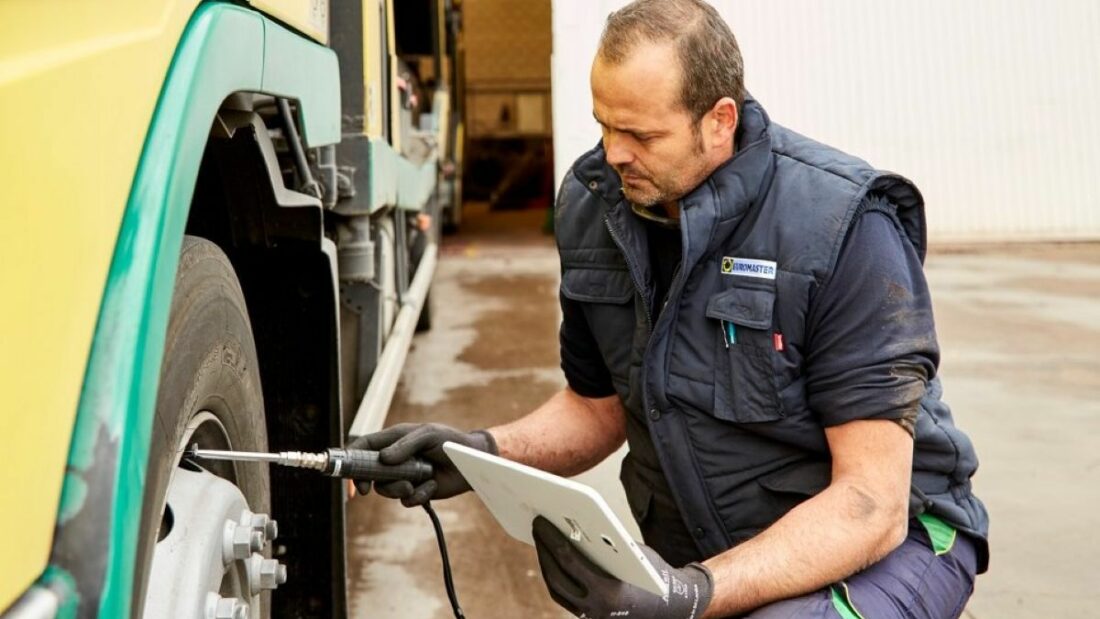Tire Failures Drive 30% of Truck Breakdowns in Europe
Truck breakdowns in Europe have a culprit that’s often overlooked but hugely impactful: the tires. A striking 30% of industrial vehicle failures are due to tire-related issues, and of these, a staggering 90% trace back to pressure loss. This isn’t just a minor maintenance quirk—it’s a major factor affecting safety, costs, and operational efficiency on the road.
The Crucial Role of Tire Pressure
Underinflated tires can wreak havoc beyond just triggering breakdowns. They compromise vehicle stability and safety, potentially leading to accidents. This makes robust tire maintenance not a luxury but a necessity. It’s no wonder that in Europe, starting July 2024, all newly registered heavy vehicles—including semitrailers—must be equipped with a Tire Pressure Monitoring System (TPMS), as mandated by the UN ECE R-141 regulation.
How TPMS Prevents Breakdowns and Enhances Safety
The TPMS is a game-changer in vehicle maintenance. Using sensors planted in the tire structure, it keeps a constant watch on tire pressure and alerts the driver immediately if any wheel’s pressure drops below 20% of the manufacturer’s recommendation (about 0.2 bar). This proactive warning system is vital because about 80% of tire puncture risks could be averted by daily pressure checks—something TPMS essentially automates.
When a TPMS alert lights up, the driver gains a crucial window of opportunity to inspect tires, brakes, and rims. If noticeable damage or uncertainty remains, calling for roadside assistance or heading to a specialized workshop is the best bet. This timely response doesn’t just prevent breakdowns—it also helps avoid costly unplanned downtime.
Benefits of TPMS for Truck Fleets
Maintaining an efficient TPMS translates into fewer unnecessary halts on busy routes, which means trucks spend more time hauling goods rather than stuck in service bays. This boosts on-time deliveries and minimizes extra expenses caused by vehicle idling.
| ベネフィット | 説明 |
|---|---|
| Safety Enhancement | Alerts drivers before pressure drops reach dangerous levels, reducing accident risks. |
| コスト削減 | Lower fuel consumption from properly inflated tires and reduced tire wear. |
| 経営効率 | Fewer breakdowns and less downtime enable timely shipments and better fleet management. |
The Financial Impact of Tire Management on Transport Companies
Tires are more than rubber and rubber—they hit transport company budgets hard. They directly and indirectly influence up to 40% of operational expenses. Here’s how:
- 燃料費: Underinflated tires increase rolling resistance, forcing trucks to guzzle more fuel. This accounts for more than 30% of total tire-related costs.
- Tire Replacement: Regular changes make up roughly 5% of costs, but poor pressure management drastically shortens tire life, hiking expenses.
- Unexpected Repairs: Breakdown-related expenses and disrupted routes cause delays that cascade into missed delivery windows and unhappy clients.
Best Practices for Fleets and Independent Drivers
Experts strongly advise a disciplined maintenance calendar incorporating checks of tire tread, rims, and the TPMS. Both fleet operators and solo truckers benefit significantly from systematic inspections aimed at catching issues before they spiral into costly breakdowns.
TPMS Maintenance: A New Standard in Fleet Care
Companies like Euromaster specialize in TPMS maintenance, offering tailored services to keep systems functioning at peak accuracy. This isn’t just about safety—it’s also a tool for trimming overall costs, avoiding unnecessary stops, and preserving cargo timelines.
What to Do When Facing a Low Tire Pressure Alert
- Stop safely and conduct a thorough tire, rim, and brake inspection.
- Look for visible damage such as cuts, bulges, or worn treads.
- If uncertain, contact a professional assistance service immediately.
- Avoid driving long distances with low pressure to prevent further damage.
Wrap-Up: The Tire Factor in Trucking and How Technology Helps
In sum, tire pressure is the unsung hero behind truck reliability and safety in Europe. The introduction of mandatory TPMS on new vehicles represents a significant leap forward for the industry, easing the burden on drivers and fleet managers alike and driving meaningful savings. Tire care intertwines directly with logistics efficiency—after all, a well-maintained tire means fewer costly hiccups in freight delivery.
While reviews and feedback from experts highlight the benefits of tire pressure monitoring and maintenance programs, nothing beats firsthand experience. On platforms like GetTransport.com, logistics managers and drivers can access cost-effective, reliable cargo transportation solutions globally. From office and home moves to handling bulky cargo and vehicle transport, the platform simplifies logistics while offering transparency and convenience.
By choosing reliable transportation partners and emphasizing preventive measures like TPMS upkeep, operators safeguard their fleets from breakdowns and unexpected delays that can disrupt shipments. Book your freight transport with GetTransport.com for a seamless, dependable hauling experience and get the best offers tailored to your logistics needs.
Looking Ahead: Logistics in the Era of Tire Monitoring
Will this tire-centric shift ripple globally? While the TPMS mandate mainly targets the European vehicle market, its influence is bound to inspire tighter standards and awareness worldwide. For logistics, this means a push towards smarter fleets that embrace technology for safety and cost control. As transportation evolves, platforms like GetTransport.com adapt to these trends, ensuring shippers have access to the smartest and most budget-friendly haulage options available.
概要
Tire issues cause nearly a third of truck breakdowns in Europe, overwhelmingly linked to pressure loss. The upcoming July 2024 EU mandate for TPMS compliance aims to reduce these incidents by enabling real-time pressure monitoring. Benefits span improved safety, lower fuel consumption, and fewer costly delays. Transport companies stand to save significantly by adopting comprehensive tire care and TPMS maintenance schedules.
GetTransport.com offers an effective bridge between such innovations and practical logistics needs, delivering affordable, reliable freight, shipment, and bulky goods transportation worldwide. This platform’s service range—covering everything from container transport to vehicle moves—helps customers manage their cargo with confidence, speed, and budget-friendly options, making it a wise choice for logistics professionals looking to stay ahead in a shifting transport landscape.

 Unpacking the Impact of Tire-Related Breakdowns and TPMS Regulations on European Trucks">
Unpacking the Impact of Tire-Related Breakdowns and TPMS Regulations on European Trucks">